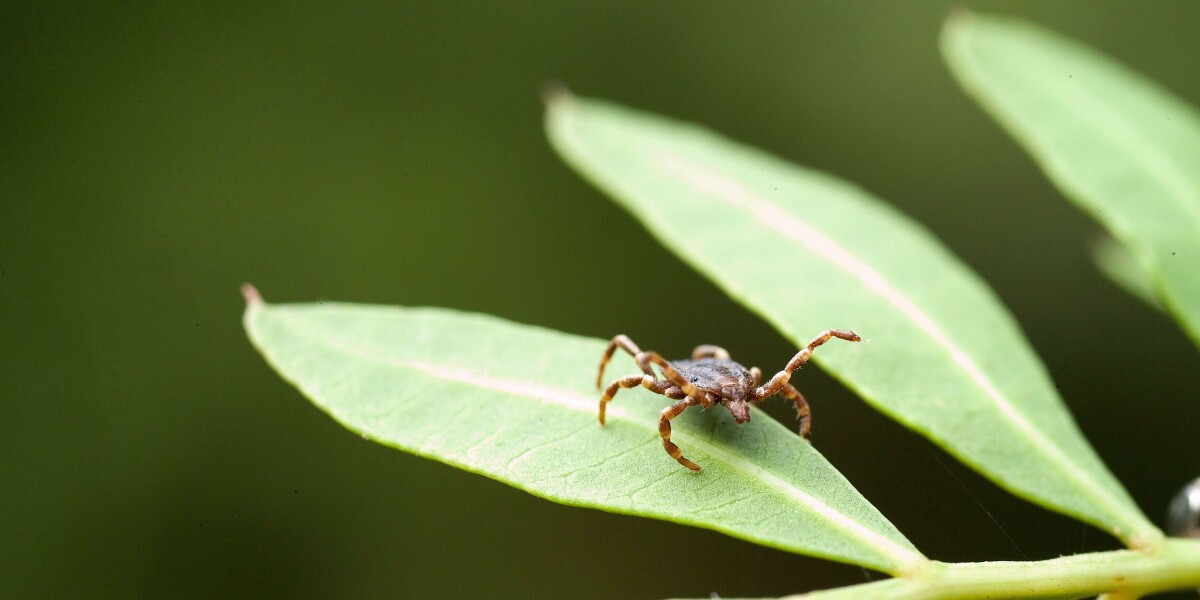
- Select a language for the TTS:
- UK English Female
- UK English Male
- US English Female
- US English Male
- Australian Female
- Australian Male
- Language selected: (auto detect) - EN
Play all audios:
THE TICKS ARE MAINLY KNOWN FOR SPREADING CRIMEAN-CONGO HAEMORRHAGIC FEVER, AND HAVE BEEN REPORTED IN 11 DEPARTMENTS SO FAR People in France are being warned to be on the lookout for ‘giant’
ticks, which are twice as large as those normally reported, and can spread diseases such as Crimean-Congo haemorrhagic fever. The tick is called the Hyalomma marginatum. This is in contrast
to the Ixodes ricinus tick, which is present across most of France, and is the main carrier of illnesses such as Lyme disease. Read more: Be aware: tick bites can cause Lyme disease, says
survivor As of the end of May, the Hyalomma marginatum ticks had been reported in 11 departments, said health authority Santé publique France (SPF). They are: * Alpes-Maritimes * Ardèche *
Aude * Bouches-du-Rhône * Corse-du-Sud * Drôme * Gard * Haute-Corse * Hérault * Pyrénées-Orientales * Var Read more: Where in France you are most at-risk from Lyme disease ticks Read more:
MAP: See the areas of France that suffer most from ticks Hyalomma ticks originally come from Africa and Asia, and first came to France with birds as they migrated from Africa. They have
been present in Corsica for several decades, and were first reported in France in 2015, on the Mediterranean coast. They tend to be active from spring to autumn, and spread diseases by
biting one infected host (animal or human), and then biting another. They are known to bite animals such as goats and cattle, whose raw (unpasteurised) milk can then transmit the disease.
The main disease spread is Crimean-Congo haemorrhagic fever (CCHF). The World Health Organization states that the fever has a 10-40% mortality rate. SPF said: “In October 2023, for the first
time in France, the Crimean-Congo haemorrhagic fever virus was detected in ticks of the species Hyalomma marginatum taken from cattle in the Pyrénées-Orientales and Corsica.” So far,
however, "no human case has been diagnosed in France. Nevertheless, the risk of infection has now been shown”, SPF said. In contrast, Spain has recorded several ‘native’ cases each
year since 2013, with some deaths (‘Native’ means that the cases came from within Spain, and were not only identified in people who had travelled to a recognised at-risk zone.) In 2023,
French health and environment agency Anses (Agence nationale de sécurité sanitaire de l’alimentation, de l’environnement et du travail) calling for the introduction of a national
surveillance system of Hyalomma ticks, to track their spread more precisely. HOW TO AVOID BEING BITTEN CCHF causes symptoms including fever, chills, and digestive problems and, in rare
cases, severe forms with uncontrolled bleeding that can lead to death. The main advice to avoid being bitten by a giant tick is the same as for their smaller cousins. It includes: * Be alert
to possible tick bites when in areas of scrubland, fields, footpaths, crops, orchards, and vineyards * Wear clothing that covers the legs and arms, preferably light-coloured to make the
tick easier to see * Wear closed shoes * Inspect your body, and those of children and pets, for signs of ticks regularly Santé publique France said that people should not rely entirely on
repellents. It said: “As skin repellents have limited effectiveness, they should not be used as a substitute for the preventive measures mentioned above.” Read also: Lyme disease: How to
minimise risk of ticks in your garden in France WHAT IF SOMEONE GETS BITTEN? You can buy special tick remover ‘tweezers’, which help to remove the tick without crushing it (as this can make
the bite worse). You can also use a pair of fine tweezers to remove the tick quickly. * Remove the tick without crushing it * Disinfect the bite site and take a photo of the bite * Stay
alert to any symptoms of illness, especially of CCHF (above) * If any symptoms develop within around 14 days, consult a doctor, telling them about the bite and show them the photo * Lyme
disease bites tend to form a circular ‘bullseye’ rash, while CCHF usually brings on symptoms within a few days





